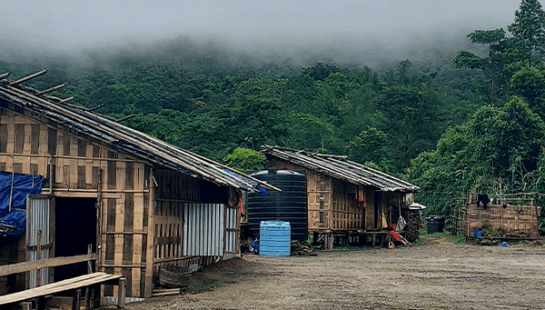A decade ago, I didn’t give ethical fashion much of a thought. The fashion I knew was cheap and disposable. When buying a new outfit my first consideration certainly wasn’t about the person who made my clothing, or if they were well paid. I understood that my clothing came from overseas—after all, the tag read, ‘Made in Bangladesh’ or China or Turkey or somewhere else equally far away. The reality experienced by the people who had made those clothes felt so incredibly distant.
Ten years later, I’m writing to you as someone who lives and breathes ethical fashion. Living wage, responsible purchasing practices, and sustainable textiles are all part of my everyday vocabulary. But I know it is not just me that has changed.
A decade ago, our collective consciousness began its move from ‘ego’ to ‘eco’. In the years that followed, ethical fashion moved from a niche, nice-to-have-if-you-can-be-bothered consideration, to a major strategic focus of the biggest fashion companies in the world.
Here are the moments and movements that have paved the way for a new fashion industry over the last decade.
Disaster
Nothing sharpens our focus more than a tragedy. As we are currently seeing through the coronavirus (COVID-19) crisis, when disaster strikes, we are forced to pause and challenge the reality we have always known. In 2012 a spate of factory fires, including Ali Enterprises in Karachi, Pakistan and Tazreen Fashions in Dhaka, Bangladesh, tragically took the lives of hundreds of garment workers and opened eyes to the dire working conditions in manufacturing hubs, globally. In April 2013 at least 1,132 people were killed and thousands more were injured as the Rana Plaza building in Bangladesh collapsed to rubble. In these tragic moments, the world became acutely aware of the plight of garment workers as this devastating reality was played out on our television screens and in the print of our newspapers.
Collaboration
Moments like this made very clear that the challenges facing the garment industry were complex and pervasive, requiring meaningful collaborative action.
In the aftermath of Rana Plaza, retailers, unions, and factories came together to work towards a safer garment industry through The Alliance for Bangladesh Worker Safety and The Accord on Fire and Building Safety in Bangladesh. As the decade went on, the industry applied these lessons and continued to collaborate on finding common solutions to social and environmental challenges. One influential example is the Action Collaboration Transformation (ACT) foundation, a project founded in 2016 that brings together 20 major companies in a movement towards paying workers a living wage.
The Role Of The United Nations
The efforts of corporations, states, and NGOs have been supported by a number of key United Nations (UN) initiatives in the past decade. In 2011 the UN’s Human Rights Council established a global standard for states and corporations to prevent human rights abuses in business operations through the Guiding Principles for Business and Human Rights. In 2018 we saw industry actors boldly commit to net zero emissions by 2050, through the UN Fashion Industry Charter for Climate Action. To round out the decade, the UN Alliance for Sustainable Fashion was launched with a goal to contribute to the Sustainable Development Goals through improved working conditions and a reduction of industry waste and emissions.
Legislation
While international cooperation has shaped the vision, in the past decade a number of government-led initiatives have solidified the precedent for corporate responsibility across the globe. The first of these, The California Transparency in Supply Chains Act (2010), requires manufacturers and retailers to report on how they are addressing issues of slavery and trafficking across their business operations. This was followed by similar acts in the UK (2015) and France (2017). Australia followed suit in 2018, when our Federal Government developed its own modern slavery legislation. As we move into the new decade, an estimated 3,000 companies operating in Australia will be required to report under the federal act.
The Rise Of Reuse
The environmental movement took off over the last decade with eco-apparel growing to a $5 billion market in the United States, up 300 per cent in that time. As we come to terms with the impact of mass consumption, we’ve seen circularity and clothing reuse rise. In 2017 The Circular Fibres Initiative (now called, ‘Make Fashion Circular’) was launched to bring together industry stakeholders in a commitment to collecting, reselling, and recycling clothing for a more circular economy. As the industry moves in this direction, recycled, biodegradable, and bio-fabricated fibres are on the way up, with McKinsey estimating that companies would file five to eight times as many fibre innovation patent applications in 2019 as they did in 2013.
Consumer Advocacy
As the industry has started to move, consumers have also become more aware of the impact of their clothing, through resources such as 2015 documentary The True Cost and Baptist World Aid’s very own Ethical Fashion Report. Since the first iteration of the report in 2013, consumers across Australia have used the Ethical Fashion Guide as a tool to speak boldly and preference the brands that are doing the most to support the workers in their supply chain. In 2019, we reported that 50 per cent of companies were publishing supplier information, up from just 13 per cent in 2013. Last year we also saw that 48 per cent of companies were working to trace their raw materials, 61 per cent were using sustainable fibres, and 48 per cent had started developing a living wage methodology. These changes are a testament to the persistent effort of consumer advocacy, partnered with international collaboration and the willingness of brands to progress.
What’s Next
It seems we have come a long way in a decade. We should celebrate every win that pushes us one step closer to fair jobs, living wages, and green production as the new normal.
However, the work is not done yet. And even as we reflect on what the past decade has looked like for ethical fashion, the coronavirus crisis will undoubtedly play a role in shaping the next. What began as a health crisis has unfolded into a humanitarian and economic disaster, with the potential to undo years of progress and advocacy. In this moment, the world we have been striving for—together—has never been more relevant.
As we consider what our global systems look like through the lens of coronavirus, we are hopeful that in the wake of collapse, we will rebuild kinder, fairer, and greener . . . with a deeper understanding of what it truly means to protect the vulnerable.
This article is from a five-part series on ethical fashion and the global fashion industry. To see all five parts, please click here.



 Sophia Russell,
Sophia Russell,

 Keziah Redelinghuys,
Keziah Redelinghuys,